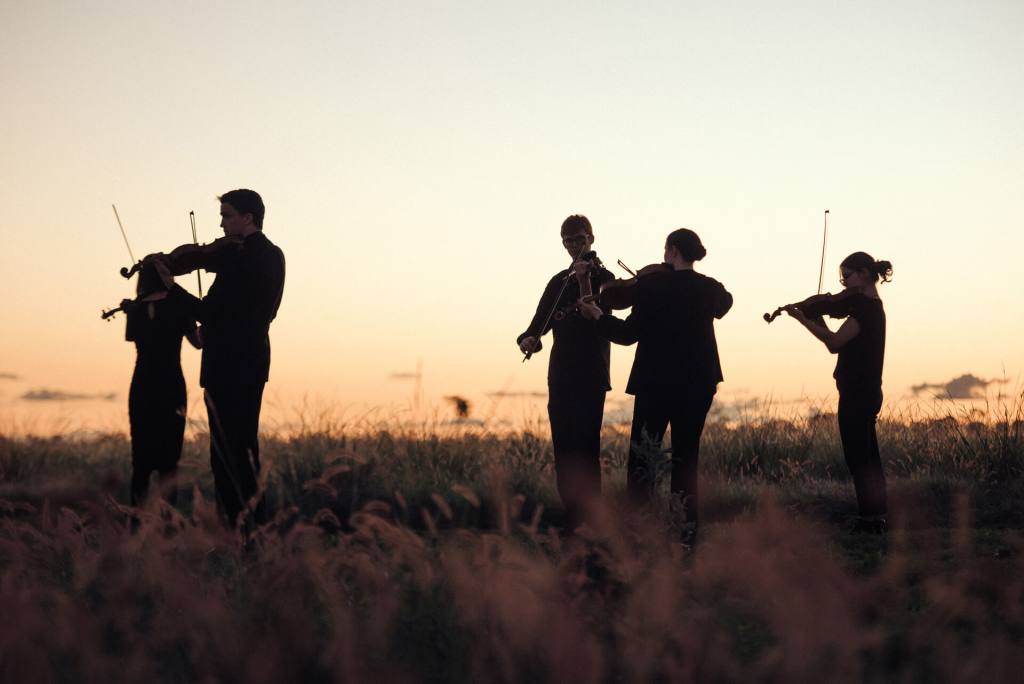Discover the intriguing field of IR photography to see how it may reveal strange, alien landscapes and record obscure light spectrums.
What is IR photography?
Infrared photography is a look into the invisible world. The human eye can see wavelengths from about 400nm–700nm (from purple to red). Infrared light exists in the wavelengths beyond 700nm.
An infrared photography camera is specially designed to capture images in the infrared spectrum, revealing unique and often ethereal details that are invisible to the naked eye.
IR photography can be done with either infrared film or a digital camera and typically involves near-infrared light in the 700nm-1200nm range. This is different than thermal infrared, which images far into the infrared spectrum.
Infrared photography produces some very distinct effects, which make it aesthetically pleasing. The most striking difference is the “Wood Effect,” where leaves reflect infrared light, giving them a bright white hue in IR photos. This effect is named after photographer Robert W. Wood, who is considered the father of infrared photography.
This effect is utilized in landscape photography to produce surreal color landscapes or high-contrast black and white photographs.
What are the uses of infrared photography?
Infrared has a strong appeal for fine art photography. It looks surreal and otherworldly, with trees taking on a bright white or yellow hue and skies a red or blue hue. Leaves appear frozen over, and skies take on dramatic colors in both black and white and color photography. Take a look at our Gallery page for examples.
IR photography is also a handy tool for wedding or portrait photographers. Skin looks much softer, and most blemishes disappear.
Besides the appeal to fine art photography, infrared and full spectrum photography are used in other fields. Many materials and dyes do not look the same in visible and infrared light. As a result, it can be used to spot camouflage, counterfeit money, and see through spills for document recovery.
Full spectrum photography is also popular in physics for taking pictures of stars because some are only visible when viewed in the IR or UV spectrum.
There are also countless other applications for full spectrum photography, including agricultural or ecological plant analysis, medical applications, forensics, greater light sensitivity for low-light shooting, game hunting, and many others.
How to do infrared photography?
There are three general ways to do IR photography:
1. Infrared film
This was the first method developed and the only way to shoot infrared for a long time. It required specialized film, an infrared lens filter, and a specialized development process. This can still be done today, but the film is hard to find.
Pros:
- Nostalgia
- Learning to overcome challenges
Cons:
- Hard to find the film
- Hard to keep the film from fogging
- Exposure and focus bracketing required
2. Digital camera with an infrared lens filter
This is possible because modern digital sensors are sensitive to wavelengths between 300nm and 1200nm. To preserve the color fidelity for normal photography, manufacturers have integrated “IR cut filters” over the sensors to block UV and IR. These filters are not perfect, so by placing a 720nm IR filter on the lens and taking a long exposure, you can take infrared photos on some cameras.
Pros:
- The cheapest way to try infrared
Cons:
- Long exposures require a tripod
- Motion blur
- Exposure and focus bracketing
- Fewer filter options
3. Infrared converted camera
By removing the IR cut filter over the sensor and replacing it with an IR pass filter, the camera becomes fully sensitive to infrared. This infrared conversion eliminates the need for long exposures and lens filters.
Pros:
- Normal exposure times
- Can use the camera like normal
- More filter options
- Sharper results
Cons:
- Pricier than a filter
Conclusion
Exploring infrared photography methods, tools, and post-processing, can unleash a world of artistic possibilities and produce remarkable, one-of-a-kind photos.
Ready to learn more about infrared photography? Check out our other beginner articles here!









5 Responses
This is a great article talking about some of the major difference between digital and film infrared. I was wondering if you have a few more details on shooting portraits with infrared film and not a digital camera converted to full spectrum. Thanks again for the great article.
Sorry, our expertise is in digital.
You could reach out to Blue Moon Camera and Machine! They are in Portland Oregon and are strickly a film hub and have expertise in all things film.
I just started doing infra red using a modified Nikon D-7000 and the results are stunning. I find old buildings are an excellent subject as well as landscapes. It has been my experience so far that setting my camera for a dark
exposure gives me better results and more contrast. Your article has helped me to understand the entire process better.
Really enjoyed this article, who is the photographer for the image? Also, I cant seem to wrap my head around the filter process. If the sensor has its own “block IR filter” and we place an IR filter on the lens are we breaking up the IR rays so that the sensor thinks the IR rays are something in the visible arena? Also on a side note purple is the combination of red and blue- blue being at 400nm.